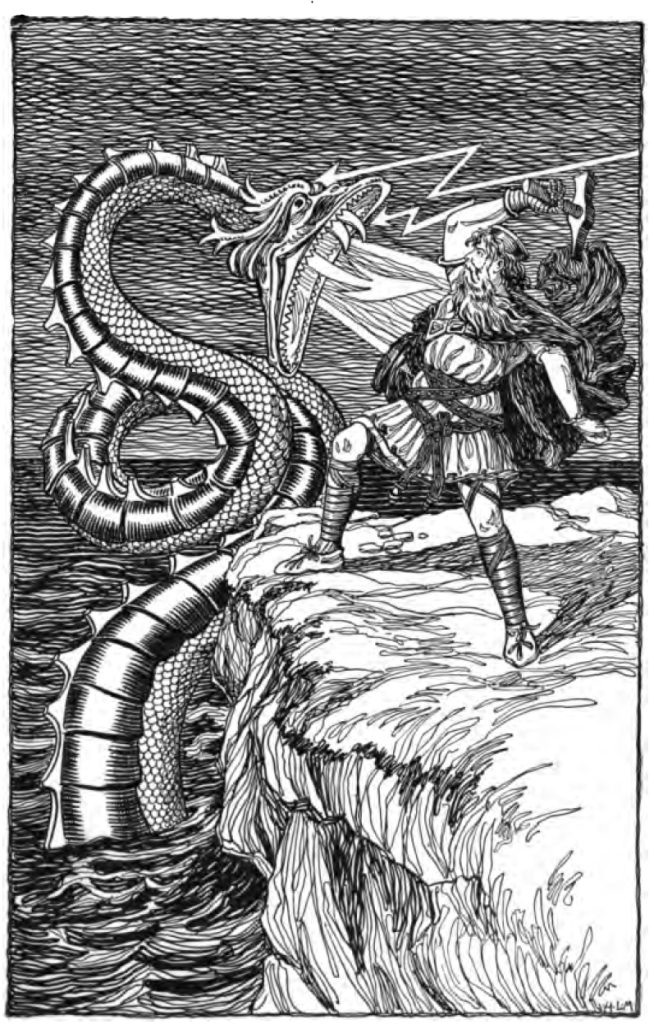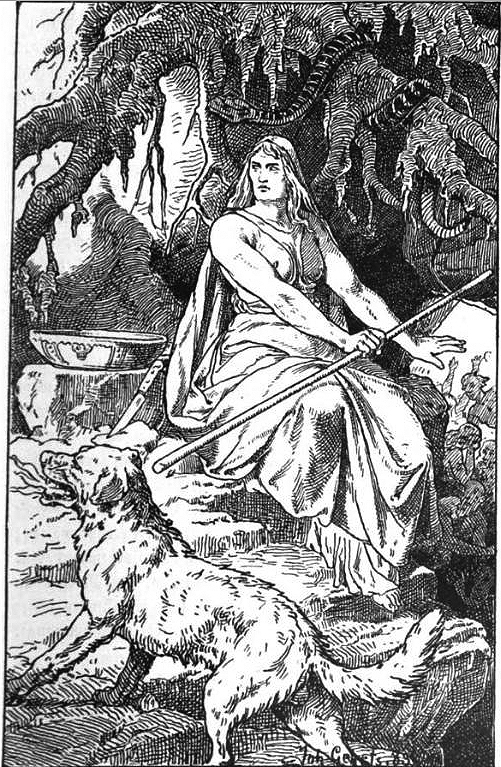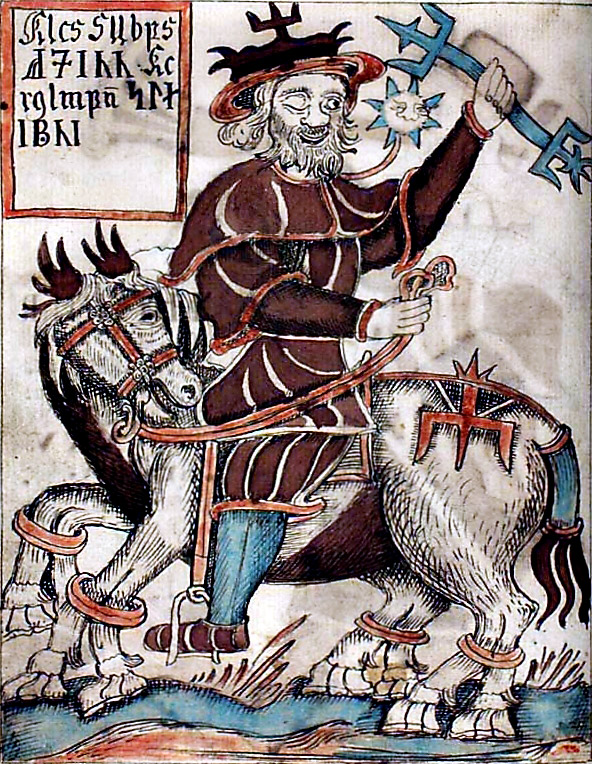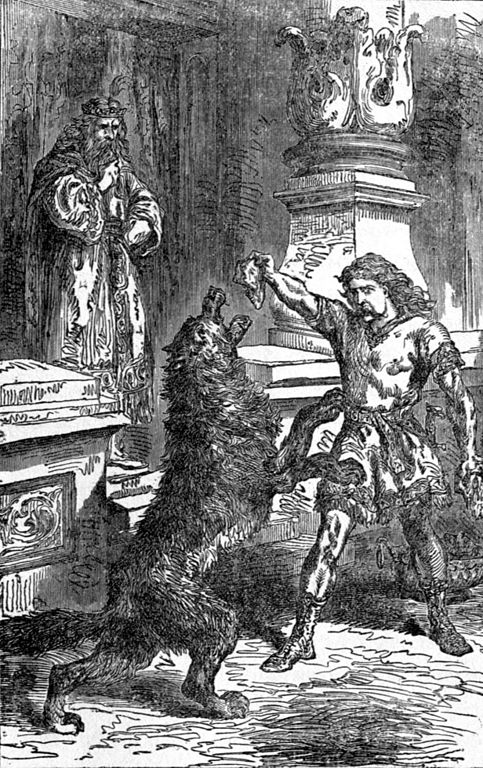Loki was the son of Farbauti and Laufey and birthed six children. However, his playful antics were nothing compared to his six children. Loki was the father (and, in one case, the mother) of six children that played an influential role in the lives of the Gods, as well as Ragnarök.
Loki’s Six Children
Loki’s six children played a significant role in Norse mythology, but not all were evil. While some were so powerful that they felled even the most mightily Æsir gods, others were used for good (like Sleipnir).
Jörmungandr
Jörmungandr, aka the Midgard Serpent, is one of the most powerful beings in Asgard and the largest. He is the son of Loki and the giantess Angrboða, and his name translates to ‘enormous monster.’ He is so large that his body spans the circumference of the world back around to bite his own tail.
The followers of Norse mythology believed that Jörmungandr kept the world in place by tightly wrapping his body around it. If Jörmungandr were to let go, the earth would fall apart.
Jörmungandr and Thor, the god of thunder, have a few passing encounters in old Norse sagas, causing their rivalry to grow. Their most significant encounter, however, happens in Ragnarök.
When the two finally face off, Thor kills Jörmungandr with Thor’s hammer, Mjölnir, only after Jörmungandr strikes Thor with his venom. After Jörmungandr’s defeat, Thor takes nine steps away from the beast and then falls over dead. That’s right; Thor dies at the hands of one of Loki’s children.

Hel
Hel is the daughter of Loki and Angrboða. She is described as having a lovely face on one side and the face of a rotting corpse on the other. Right after Hel was born, the god Odin cast her out of Asgard to live in Helheim and made her their queen.
As the ruler of Helheim, Hel ruled over all Vikings who died dishonorably in battle or those who died of old age. As a natural enemy to the Asgardians, Hel returned with her undead army to Asgard in the final battle at Ragnarök.

Sleipnir
Unlike Loki’s other children, he was the mother to Sleipnir. He mated with a stallion named Svathlifari and gave birth to an eight-legged horse.
Sleipnir was one of the fastest horses in all of the nine realms and was one of the few creatures that could travel back and forth from Hel. Odin admired this magnificent creature so much that Loki gifted it to his father.

Fenrir
The wolf Fenrir was terrifying and mighty, just like his brother Jörmungandr. While he started as a tiny wolf cub, he grew larger and more terrifying with each passing day.
Fearing what Fenrir would become, the Æsir gods decided to bound Fenrir. However, he could not be bound by ordinary measures. So, the dwarves constructed an unbreakable rope called Gleipnir.
Someone needed to place their hand inside his mouth to bind Fenrir, and Tyr volunteered. As suspected, the magical rope bound Fenrir. He panicked and bit off Tyr’s hand.

Vali
There isn’t much known about Vali. The old Norse myths don’t tell us who his mother is.
We do understand that Vali was the son of Loki, and the Æsir gods transformed Vali into a wolf.
Narfi (or Nari)
Much like Vali, there is little in the old Norse myths about Narfi. He was the son of Loki and Sigyn, an Ásynjur goddess.
Narfi was eventually killed by Vali, who was transformed into a wolf by the gods.
Loki’s Wives
Loki’s sorted past and all of his affairs and wives can get a little confusing. In much of the Poetic Edda, Loki is only married to Sigyn. While he has children with other women (and male stallions), Sigyn is faithful to Loki until the bitter and bloody end.
In the Lokasenna, Loki brags about various affairs with Sif, Freyja, Skadi, and even Tyr’s wife. Loki may have strayed, but his trickster heart belonged only to Sigyn.

Interesting Facts About Loki’s Children
- Odin Killed Narfi. When Odin punishes Loki for causing the death of his son Baldr, he goes a little overboard. As punishment, Odin transformed Loki’s son Vali into a wolf who killed his brother Narfi. Then, Odin used the entrails of Narfi to bind and torture Loki.
- Fenrir Killed Odin at Ragnarök. Of all of Loki’s sons, Fenrir was powerful enough to kill the mighty Odin. During the events of Ragnarök, Fenrir frees himself of his binding and kills Odin by swallowing him. Witnessing his father’s death, Vidar kills Fenrir.
- Hel is Loki’s Only Daughter. Of all of Loki’s children, Hel is the only child that takes a human form. Some sources from the Prose Edda describe Hel as youthful and beautiful on one side of her face and old and decaying on the other.
- Sleipnir was born because the Æsir gods were cheap. Before Asgard had fortified walls, they paid a humble builder to craft the walls. They only agreed to pay if he could finish in a single season, which was impossible. Working with his steed Svathlifari, it became clear that he could finish on time. So, to distract the stallion, Loki shape-shifted into a mare and lured the stallion away. The gods killed the builder, and soon after, Sleipnir was born.

